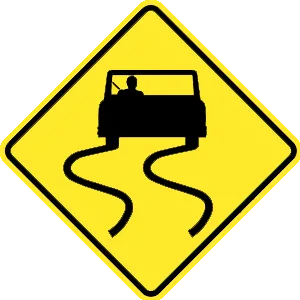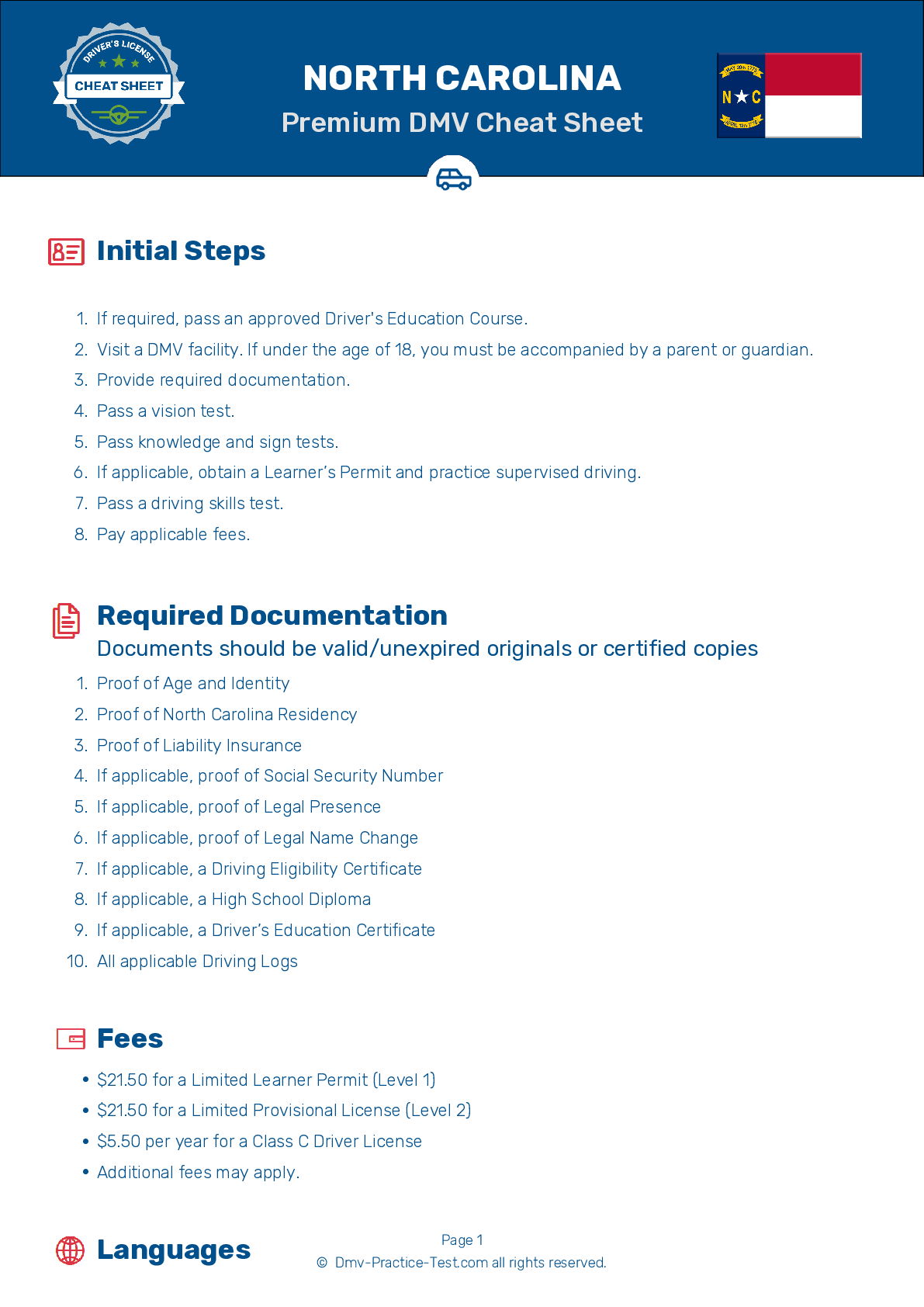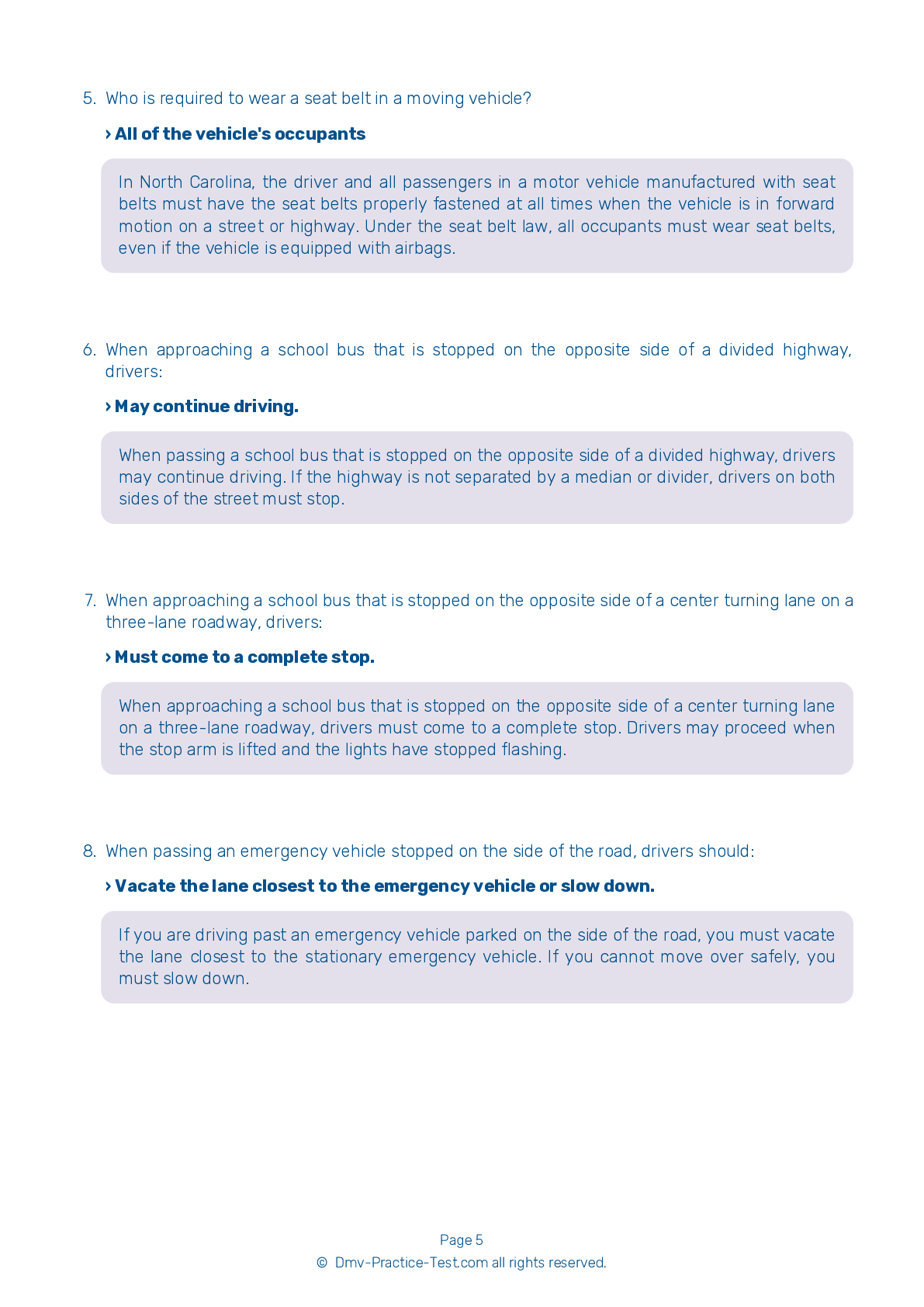FREE North Carolina DMV Practice Test #2 Page 4 of 5
The DMV practise exams in North Carolina have been updated for January 2025. It includes questions based on the most important traffic signals and legislation in the North Carolina Driver Handbook for 2025. To study for the DMV driving permit test and driver's licence exam, use actual questions that are very similar (often identical!) to the DMV driving permit test and driver's licence exam.
Each question on the practise exam has a tip and explanation to help you recall the ideas. Questions about traffic rules, traffic signs, and driving statutes, as well as knowledge from the Driver Handbook, will be included in the written portion of the official North Carolina DMV test.
You must properly answer 32 of the 37 questions to receive a passing mark. To help you prepare for your instruction permit or driver's licence, take this practise test from the North Carolina Department of Motor Vehicles.
The DMV exam is offered in a variety of languages.
Using any form of testing help will result in an automatic fail, and the DMV may take further action against your driver's licence, so avoid it.
26 . When encountering an aggressive driver, you should:
If another driver is threatening you or intentionally driving dangerously around you, remain calm and try to put as much distance between the two of you as possible. Slow down and let them pass. Do not make eye contact and do not make obscene gestures.
27 . This road sign means:

This sign warns that pavement is slippery when wet. In wet conditions, you should reduce your speed, avoid braking or changing direction suddenly, and increase the distance between your vehicle and the one ahead.
28 . Which of the following is true regarding seat belts and child restraints in vehicles?
Before you drive, always fasten your seat belt and make sure all your passengers are using seat belts or child restraints. Studies have shown that if you use seat belts, your chances of being hurt or killed in a traffic crash are greatly reduced. Children age 12 and under should always ride properly restrained in a rear seat. Never put a rear-facing infant restraint in the front seat of a vehicle with a front passenger airbag.
29 . This sign means:

Warning signs prepare drivers for upcoming road conditions and hazards and are usually yellow with black markings. This sign warns drivers that they are approaching a winding road and that they should adjust their speed accordingly.
30 . If your license has never been suspended due to the North Carolina point system, accumulating ____ against your license within a three-year period will result in license suspension.
If you accumulate 12 points against your license within a three-year period, your license will be suspended. If your license has previously been suspended due to the point system, it will be suspended after accumulating only eight points.
31 . “Highway hypnosis” is a driving condition that can result from:
"Highway hypnosis” happens when you stare straight ahead at the roadway for long periods of time and stop actively scanning ahead, behind, and around your vehicle. This can lead you to zone out, making you very likely to crash into traffic slowing or stopping ahead of you.
See the exact questions that will be on the 2025 North Carolina DMV exam.
99.2% of people who use the cheat sheet pass the FIRST TIME
LT gives us an insight on how the cheat sheet provided her with all the study questions she needed before taking her test.
Joe initially studied with the handbook and failed his test, he eventually found us online, studied and pass his test the first time around.



